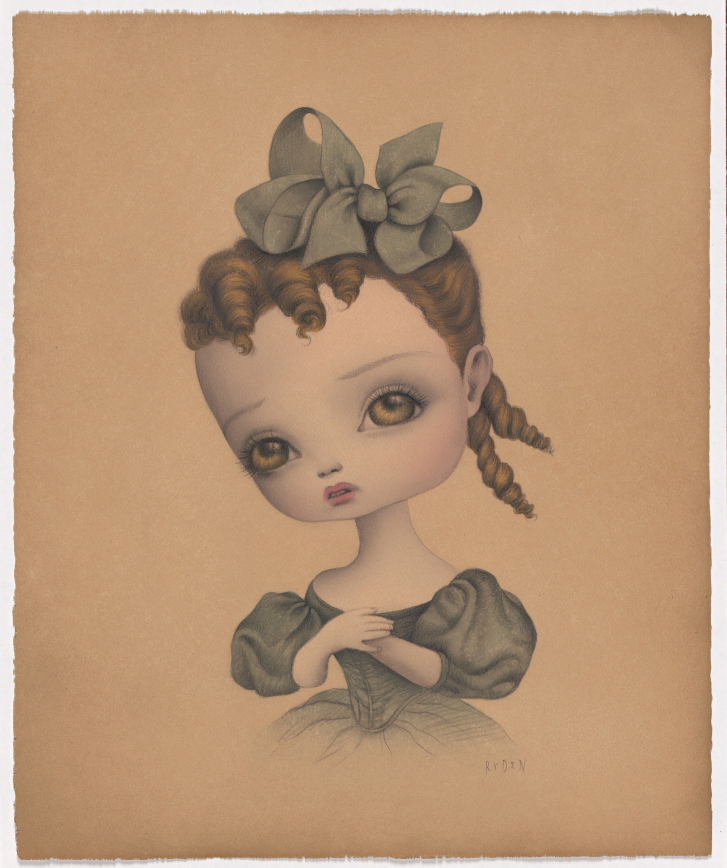Arsenic and Old Lace

MARK RYDEN, DAISY, 2010.
COURTESY THE ARTIST AND PAUL KASMIN GALLERY
You don’t have to invent a movement to be considered its ambassador; you just have to be the best at it—or at least its most popular practicioner. And painter Mark Ryden, whose first major solo show in seven years, “The Gay 90s Olde Tyme Art Show,” opened last week at Paul Kasmin Gallery, has long been considered the godfather of Pop Surrealism because his work inhabits both arenas. His deeply devoted followers range from obscuro goths, steampunks, and cultish Victoria-philes to celebrities like Leonardo DiCaprio and Jake Gyllenhaal; his work has graced the covers of books (Stephen King) and records (Ringo Starr, Red Hot Chili Peppers, Michael Jackson). He is a master draftsman with a dark imagination whose swoon-and-cringe inducing works of dazzling old world opulence make even the most uninformed spectator feel reverence and communion, like they lost a part of themselves in a time in which they never lived. And while Ryden has always depicted a vague suggestion of modernistic antiquity, with this show of new oil paintings, drawings, and sketches, he’s become quite specific: its title references the pre-Income Tax, mauve-heavy final decade of the 19th century, the American equivalent to Europe’s fin de siècle.
“Being born in 1963, I grew up in a time where I was surrounded by these heavily sentimentalized Gay 90’s images,” explains Ryden. “These images give me very strange feelings. On the one hand, they can make me queasy with their thick content of saccharine, but on the other hand, I am fascinated by vintage objects, by nostalgia, memory, and death. I am interested in exploring the line between attraction to and repulsion from ‘Kitsch.'”
In the show we see Darger-esque girls, albinos with big eyes and bangs and sometimes bows in their hair riding a bicycle-built-for-two with a bleeding Jesus Christ; or wearing a dress made of meat so sparkly you can almost taste the salt; or having tea while Abraham Lincoln (depicted as a disease-stricken gay man) grinds up fresh flesh beneath a chandelier hanging from the sky. But this small collection of paintings is less busy than works of the past; the backgrounds are calmer, more sparse. Ryden’s works come in cupcake colors and are never lose sight of kitsch, and they’re also harbingers of harmony of danger and delicacy. Hidden in these girls’ oversized eyes is the imperialism and the blood of heritage aristocracy, a sort of false innocence that might imply evil but is really coy subversiveness lurking within.






